The year 1953 in television involved some significant events. Below is a list of television-related events during 1953.

Your Show of Shows is a live 90-minute variety show that was broadcast weekly in the United States on NBC from February 25, 1950, through June 5, 1954, featuring Sid Caesar and Imogene Coca. Other featured performers were Carl Reiner, Howard Morris, Bill Hayes, baritone singer Jack Russell, Judy Johnson, the Hamilton Trio and the soprano Marguerite Piazza. José Ferrer made several guest appearances on the series.

Mister Peepers is an American sitcom that aired on NBC from July 3, 1952, to June 12, 1955.
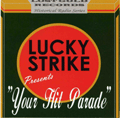
Your Hit Parade was an American radio and television music program that was broadcast from 1935 to 1953 on radio, and seen from 1950 to 1959 on television. It was sponsored by American Tobacco's Lucky Strike cigarettes. During its 24-year run, the show had 19 orchestra leaders and 52 singers or groups. Many fans inaccurately referred to the show as The Hit Parade.

Armstrong Circle Theatre is an American anthology drama television series which ran from June 6, 1950, to June 25, 1957, on NBC, and from October 2, 1957, to August 28, 1963, on CBS. It alternated weekly with The U.S. Steel Hour. It finished in the Nielsen ratings at #19 for the 1950-1951 season and #24 for 1951-1952. The principal sponsor was Armstrong World Industries.

Big Town is a popular long-running radio drama featuring a corruption-fighting newspaper editor initially played from 1937 to 1942 by Edward G. Robinson in his first radio role, with echoes of the conscience-stricken tabloid editor he had played in the film Five Star Final. Edward Pawley played the lead role longer, 1943–52, in plots that made the editor more of a hands-on crime-fighter. During the later Pawley years, Big Town was adapted to film and television series, and a comic book published by DC Comics.

Lux Video Theatre is an American television anthology series that was produced from 1950 until 1957. The series presented both comedy and drama in original teleplays, as well as abridged adaptations of films and plays.

My Little Margie is an American television situation comedy starring Gale Storm and Charles Farrell that alternated between CBS and NBC from 1952 to 1955. The series was created by Frank Fox and produced in Los Angeles, California, at Hal Roach Studios by Hal Roach Jr., and Roland D. Reed.

The Colgate Comedy Hour was an American comedy-musical variety series that aired live on the NBC network from 1950 to 1955. The show featured many notable comedians and entertainers of the era as guest stars. Many of the scripts of the series are archived at the UCLA Library in their Special Collections.
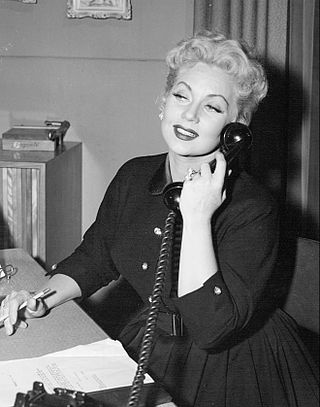
Private Secretary is an American sitcom that aired from February 1, 1953, to September 10, 1957, on CBS, alternating with The Jack Benny Program on Sundays at 7:30pm EST. The series stars Ann Sothern as Susan Camille "Susie" MacNamara, devoted secretary to handsome talent agent Peter Sands, played by Don Porter.

December Bride is an American sitcom that aired on the CBS television network from 1954 to 1959. It was adapted from the original CBS radio network series of the same name that aired from June 1952 through September 1953.
Ford Theatre, spelled Ford Theater for the original radio version and known, in full, as The Ford Television Theatre for the TV version, is a radio and television anthology series broadcast in the United States in the 1940s and 1950s. At various times the television series appeared on all three major television networks, while the radio version was broadcast on two separate networks and on two separate coasts. Ford Theatre was named for its sponsor, the Ford Motor Company, which had an earlier success with its concert music series, The Ford Sunday Evening Hour (1934–42).

Ross Elliott was an American television and film character actor. He began his acting career in the Mercury Theatre, where he performed in The War of the Worlds, Orson Welles' famed radio program.

Martin Ellyot Manulis was an American television, film, and theatre producer. Manulis was best known for his work in the 1950s producing the CBS Television programs Suspense, Studio One Summer Theatre, Climax!, The Best of Broadway and Playhouse 90. He was the sole producer of the award-winning drama series, Playhouse 90, during its first two seasons from 1956 to 1958.
The Best of Broadway is a 60-minute live television anthology series that aired on CBS Television on Wednesdays at 10 p.m. Eastern Standard Time from September 15, 1954, to May 4, 1955, for a total of nine episodes. Each show was broadcast live in color from New York City, was an adaptation of a famous Broadway play, and included commercials for Westinghouse featuring Betty Furness. Using a "giant new studio," plays were presented in front of a studio audience, which contributed a Broadway-like element.
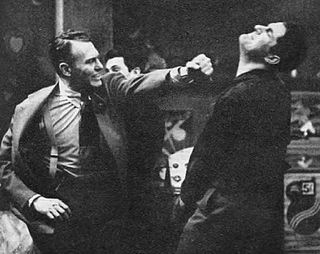
Man Against Crime starring Ralph Bellamy, one of the first television programs about private eyes, ran on CBS, the DuMont Television Network and NBC from October 7, 1949, to June 27, 1954, and was briefly revived, starring Frank Lovejoy, during 1956. The show was created by Lawrence Klee and was broadcast live until 1952. The series was one of the few television programs ever to have been simulcast on more than one network: the program aired on both NBC and DuMont during the 1953–54 television season.
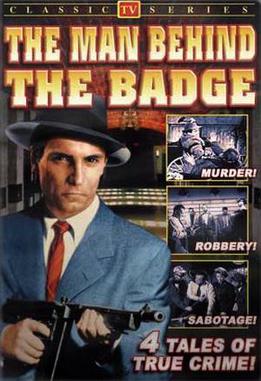
The Man Behind the Badge is a half-hour American television police drama series which aired on CBS from October 11, 1953, to October 3, 1954, originally hosted by Norman Rose. In its second syndicated season, the host became character actor Charles Bickford. Jerry Robinson was the producer.
The Best in Mystery is an American anthology and mystery television series that ran for three years as a summer replacement series for the crime drama The Big Story.
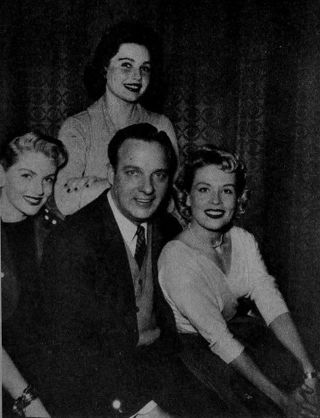
The Bob Crosby Show can refer to either of two television programs in the United States. One was broadcast in the afternoons on CBS September 14, 1953 – August 30, 1957. The other was broadcast in prime time on NBC June 14, 1958 – September 6, 1958, as a summer replacement for Perry Como's show.

Life with Father is an American television sitcom that ran from 1953 to 1955. It starred Leon Ames as Clarence Day Sr. and Lurene Tuttle as his wife Lavinia. It began broadcasting in color in 1954, and was the first live color TV series for network television originating in Hollywood.















